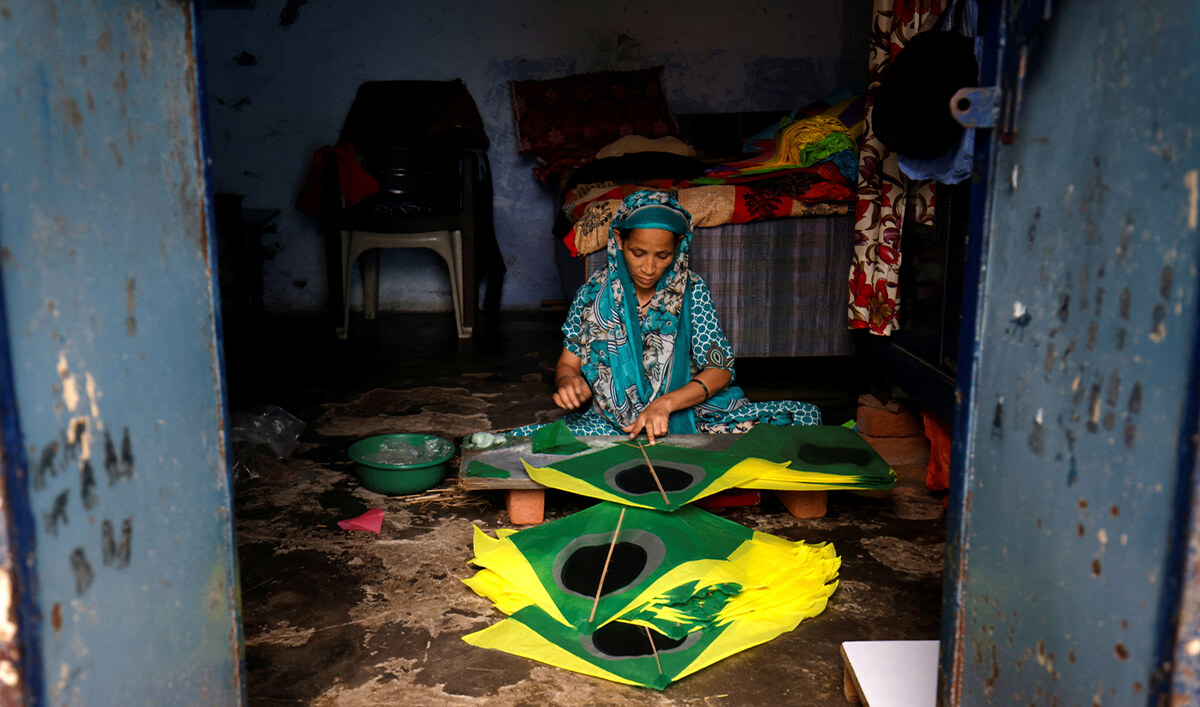ROME: Leaders of the G7 wealthy nations gather in southern Italy this week against the backdrop of global and political turmoil, with boosting support for Ukraine top of the agenda.
US President Joe Biden, France’s Emmanuel Macron and Japanese Prime Minister Fumio Kishida are among the Group of Seven leaders heading to the luxury resort of Borgo Egnazia in Puglia for the June 13-15 summit.
It comes at a sensitive time, with wars raging in Ukraine and Gaza and with Biden, Macron and Britain’s Rishi Sunak all facing elections in the coming weeks and months.
With an eye to the global challenges, Italian Prime Minister Giorgia Meloni, the host, has also invited around a dozen non-G7 heads of government, from Turkiye’s Recep Tayyip Erdogan to India’s Narendra Modi.
Pope Francis will also fly in on Friday to talk about artificial intelligence.
Ukrainian President Volodymyr Zelensky will attend a discussion Thursday on Russia’s war on his country, now into its third year, where he will again press for more help from Western allies.
G7 leaders hope to agree a deal on using the profits from the interest on $325 billion (300 billion euros) of frozen Russian central bank assets to help Kyiv.
The idea is to use the profits as collateral for a loan of up to $50 billion, but there is still debate over who would issue the debt as well as a raft of technical issues — including what would happen if the assets were unfrozen in the event of peace.
John Kirton, director of the University of Toronto’s G7 Research Group, said he expected an agreement.
“This issue has been the signature test of the summit’s performance on Russia’s aggression against Ukraine, so the G7 leaders will not do too little here,” he told AFP.
The leaders are also expected to discuss their concerns over China’s support for Russia’s military expansion.
While the summit is officially three days, the sessions end on Friday, with Zelensky and some other leaders heading Saturday to a conference on Ukraine in Switzerland.
Biden will not attend, instead sending Vice President Kamala Harris.
The summit of G7 leaders — including Germany’s Olaf Scholz and Canada’s Justin Trudeau — comes at a “particularly difficult moment on the international stage,” an Italian government source said.
The Hamas-Israel war is now in its ninth month, with the conflict to be addressed at the summit as part of a wider discussion on the Middle East. G7 leaders last week endorsed a proposed peace deal.
Tensions in the Indo-Pacific will also feature on the agenda in Puglia, as will economic security, including rising trade tensions with China on green technologies.
Non-G7 guests will join an “outreach session” on Friday afternoon.
They were set to include Saudi Crown Prince Mohammed bin Salman, Erdogan and Emirati President Sheikh Mohamed bin Zayed Al Nahyan.
Brazilian President Luiz Inacio Lula da Silva — whose country holds the rotating G20 presidency this year — Argentina’s Javier Milei, UN Secretary General Antonio Guterres and representatives from the International Monetary Fund and World Bank have also been invited.
All the guests are invited to a dinner Friday night at the Borgo Egnazia luxury hotel complex built in the style of a traditional village, an evening which will also include a short artistic show.
With security to be extremely tight, the venue is far away from protesters and journalists, with the media center located some 60 kilometers away in Bari.
Migration and relations with Africa are two priorities for Meloni for the summit, and she has invited leaders from Kenya, Algeria and the African Union.
On climate change, G7 environmental ministers have already committed in April to phase out unabated coal-fired power plants by the mid-2030s — though they left some wiggle room.
The Group of Seven is a political forum of largely like-mind democracies, but their economic weight is not what it once was — and without China, some question its relevance.
It could be the last G7 summit for several participants.
Biden is up for re-election in November, while Britain’s Sunak faces voters on July 4, when his Conservatives are expected to lose power.
Macron is also facing trouble at home: on Sunday he called snap legislative elections after his centrist alliance was routed by the far right in weekend European Parliament elections.
Meloni’s far-right Brothers of Italy party, by contrast, came out top in the vote in Italy.
G7 leaders gather in Italy for talks dominated by Ukraine
https://arab.news/2sts3
G7 leaders gather in Italy for talks dominated by Ukraine

- Pope Francis will also fly in on Friday to talk about artificial intelligence
- Ukrainian President Volodymyr Zelensky will attend a discussion on Thursday

























